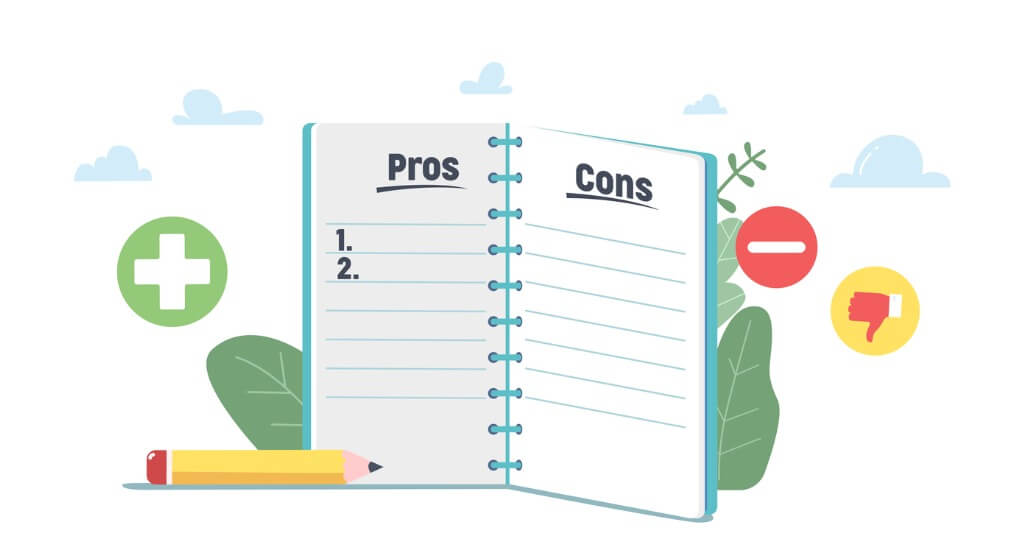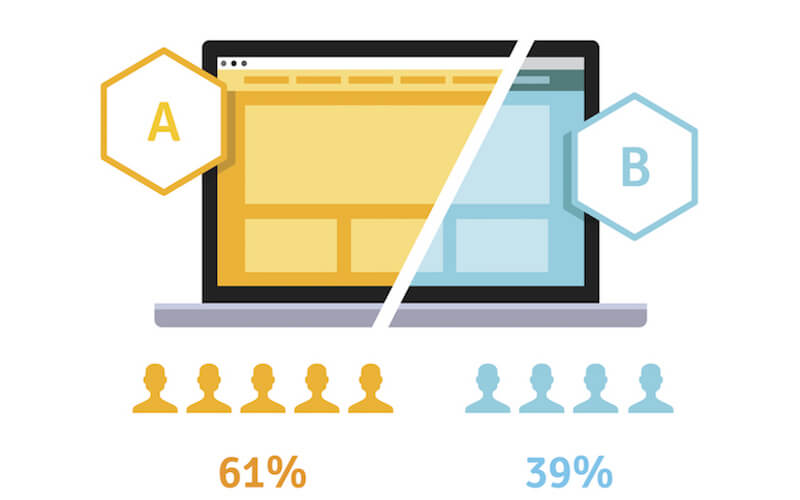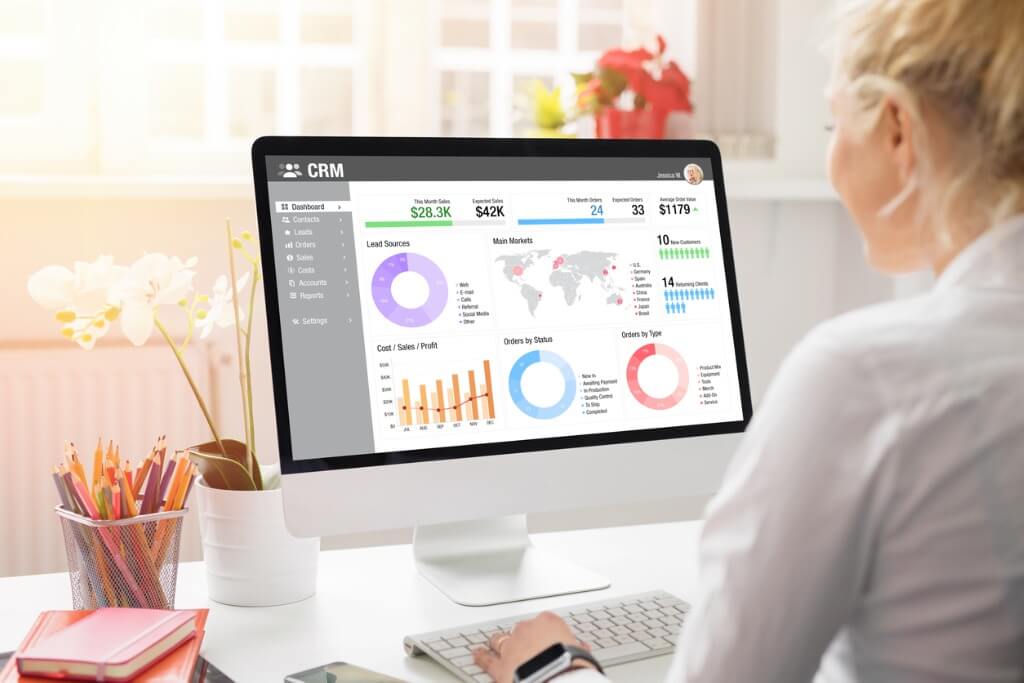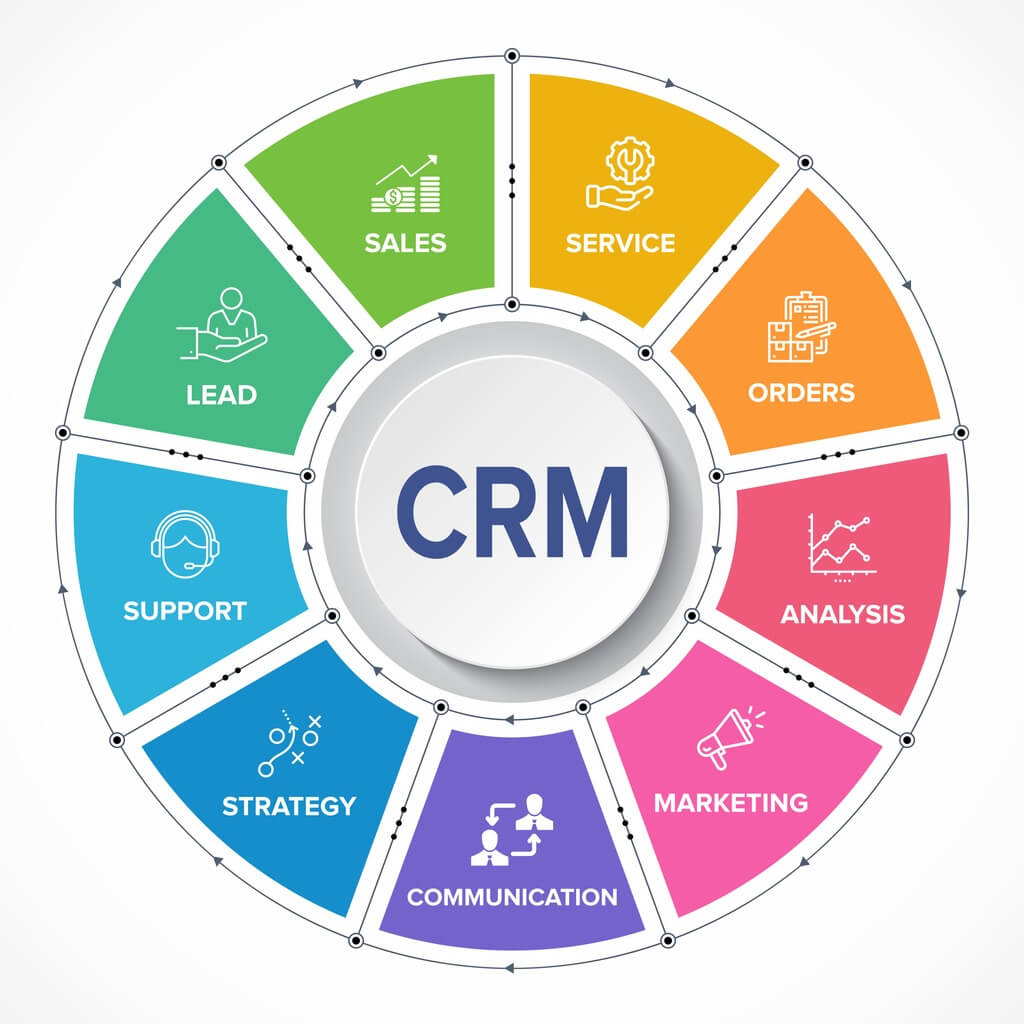What Consumers Hate About Email Marketing & the Tools You Need to Fix It
Brand and product promotion is a big part of what drives business. What better way to do that than through email marketing? In today’s digital world, the drive to promote your products and services must gravitate to the available technology to stay ahead of the game. Thus, marketers across the nation are gearing up to rocket their efforts in email marketing campaigns with increased budgets.
Email marketers are expected to spend an estimated $350 million this year, up by $80 million from 2015. Yet, with consumer attitudes towards email marketing plummeting, brands need to be careful with campaigns if they want to see ROI on their increased investment.
Understanding what drives consumers attitudes may save your email marketing campaigns from falling into the SPAM pit of despair. Here are the top email marketing complaints from U.S. consumers – and what you can do about them with the right software tools.
High frequency emailing is a turnoff–overly eager marketers get ignored
While persistence has its bonuses, sending overly frequent marketing emails can be a counterproductive for your product, service, or even your brand. Sometimes frequency is a good thing, leading to increased click-through rates, but that isn’t always true.
Marketing Charts cites frequency as the leading cause for consumers to unsubscribe from your marketing emails. Finding the right balance is the key. Brian Honigman, social media and content marketing consultant, suggests getting to know your audience, their expectations, and perceptions of your brand, and closely monitoring email engagement.
Sending an email right after a visit to your website is one way to keep communications timely and relevant without going overboard. Honigman writes “engaging your customers with email triggers based on their behaviors across your website is an effective strategy to drive revenue for your organization.”
Your email will be better received because your brand is already top of mind. They were thinking about you, and you followed up with a relevant message.
55% of B2B companies surveyed by DMA Insight send no more than 2-3 emails a month. Most B2C businesses, on the other hand, send more than 3 emails a month. Knowing your industry can give you a ballpark figure of what your competitors are sending and what your customers expect. If you find that your subscribers’ list is dropping, it might be time to rethink the frequency of your marketing emails.
Choose your words wisely: Make sure your emails are valuable
Receiving emails that are poorly written, too wordy, or simply don’t apply to your target audience is another big turnoff. Sometimes the wordiness of marketing emails can be reminiscent of that novel you were forced to read in high school that everyone dreaded. Both take too long to read, and don’t seem to apply to your life.
Bad marketing emails are filled with self-serving content boasting about features, awards, and high-profile customers. No one wants to read a mile-long list of past accomplishments. Consumers care more about what you can do for them right now.
When content is not valuable, emails become white noise in consumers’ inboxes. The average professional in the U.S. receives about 120 emails a day, not to mention the slew of marketing emails they receive to their personal inbox.
According to Matt Plummer, “Most professionals have resorted to one of two extreme coping mechanisms as a last-ditch attempt to survive the unending onslaught: at one end, there are the inbox-zero devotees who compulsively keep their inboxes clear, and, at the other, there are those who have essentially given up. Emails enter their inbox and remain.”
To reduce ignored emails, try to focus more on triggered emails. Triggered emails are sent when a consumer has engaged with a brand in a certain way. For example, if a potential customer has abandoned their ecommerce cart, send a reminder that their cart is still waiting, or offer a discount that expires soon to get them to return quickly. Or, if they read a particular article on your site, follow up about that topic, since you already know they care.
Keeping emails short, sweet, and relevant can make a difference in your marketing campaign. The key here is to customize your emails to your audience’s needs but still use a basic template to help you email at scale.
To test or not to test…(Why you need A/B testing)
Nothing screams marketing amateur louder than sending untested emails that don’t convert well. Maybe the HTML is off, or an image or buy button doesn’t appear. Those are basic technical errors that can be prevented by sending a sample of the email to yourself first. But maybe it’s more than that. Maybe the content just doesn’t jive as well as your previous email. There are many good reasons to test your emails.
When it comes to getting better results, marketers cannot simply send out email surveys asking recipients how their email campaign performed. They can’t ask “Did you like our subject lines?” or “Do you like our sense of humor?” (Well, they can–but it’s probably too meta for most recipients, and could lead to unsubscribes. Even if folks do respond, our conscious minds don’t always know what we really want, or what will actually lead us to pay attention next time we get an email.)
This is where A/B testing, or split testing, comes in. A/B testing allows marketers to send out different versions of an email to different groups of their subscribers. They can then analyze the success of different emails by controlling the variables.
MailChimp reports that eCommerce sites that use A/B testing to guide their emails earn 20% more revenue.
Simply put, testing makes sense and having the right software can help. Most effective email marketing software tools have A/B features accessible even to beginning users. It can be a meticulous process to test different templates, subject lines, and content. But it’s worth it. Knowing what works and what doesn’t will drive your success higher.
Give it that personal touch to sound more intentional
Too much personalization has a level of creepiness that’s tough to get away from, and can turn off consumers.
On the other end of this debacle is too little personalization, which can come off as cold and unwelcoming. Consumers want that personal touch that says “yes, you are dealing with another human.” For a lot of marketers, it’s tricky to find the right level of personalization.
But why is it so hard? Campaign Monitor shared some interesting statistics. They reveal that while 74% of marketers agree that personalization increases engagement, 66% of marketers are still trying to access internal resources to create these personalized marketing programs. The right email marketing tool can help bridge that gap, by providing segmentation features or integrating with your CRM database.
There are simple ways to personalize emails with just a few variables. Here are some practical ideas for personalization:
- Subject lines and first sentences including recipients’ first names
- Different images based on recipient’s persona (think 2-4 variants)
- Personalized offers based on industry, gender, interests, age, past purchases, etc.
- Personalized messages based on location
You need the right balance to keep your target audience coming back for more. In the end, listening to what consumers have to say and understanding your target audience can help you pave the road to success in your email marketing campaigns.
Email Marketing Tools: A Review Roundup
The top complaints about email marketing make it clear that marketers face a unique challenge: striking the balance between maximizing the number of people you can contact and developing a one-on-one sense of connection. This is a difficult line to walk.
Great email marketing tools can help you strike that balance. Here are a few tools that can help you make emails more efficient and add a personalized connection to your outreach.
Emma
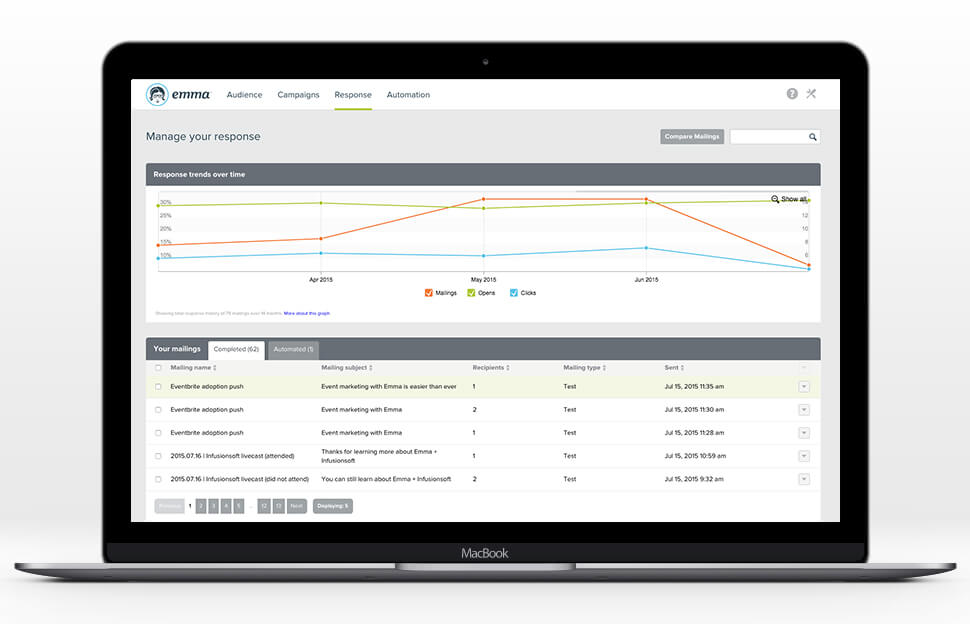
Emma is an email marketing solution designed for organizations of all shapes and sizes. The vendor’s goal is to provide enterprise-level marketing capabilities with simple user experience and interface. Additionally, the tool features a WYSIWYG editor, A/B testing, mobile optimization, and custom reporting. Reviews tend to highlight the easy to understand metrics and the ability to customize email campaigns quickly.
“They built a custom template for me exactly to my specs. It was done quickly so we could use it immediately. I’d recommend Emma for any small or large business who needs a professional looking, yet easy to use tool for email marketing.”
~ Ashley Humphrey | Director of Marketing & Communications | Hoffman Quality Tools USA, Inc.
Robly
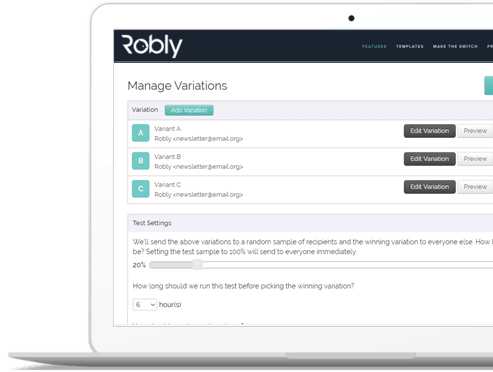
Robly is an email marketing tool designed with expert capability and beginner usability. The tool maximizes personalization through A/B testing and the ability to resend unopened campaigns with a different subject line. The Robly AI can send campaign emails one at a time, when each subscriber is more likely to check their inbox. The software features a WYSIWYG email editor, mobilize optimization, list management and more. Reviews tend to highlight the tool’s cost-effectiveness and unique features (OpenGen and Robly AI) not offered by competitors.
“Using Robly makes it simple to effectively communicate to not just our entire organization, but the almost 3,500 contacts we have as well. The user interface is easy to navigate and simple enough to learn how to use without previous design knowledge.”
~ Sterling Simon | Program Development Manager | Foundation for Positively Kids
Active Campaign
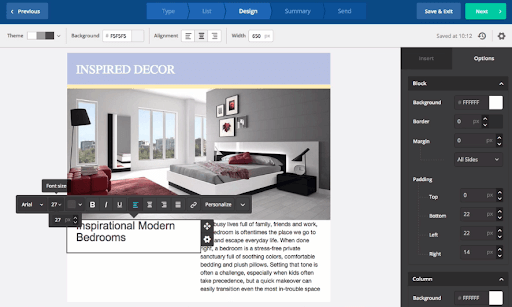
Active Campaign works as an email marketing, marketing automation and CRM tool depending on which team is using it. The email marketing solution includes segmentation, subscription forms, dynamic content and split testing. The WYSIWYG editor lets users create engaging emails, and the workflow management tool allows easy onboarding of new subscribers. Reviews tend to focus on workflow automation and reasonable pricing.
“ActiveCampaign excels at sending automated emails to customers who’ve shown interest in your business–whether by signing up for some list or freebie, visiting your online store and perhaps abandoning a shopping cart, or just for thank you or confirmation emails–all triggered by actions you determine and sent out to speak to them at the right time.”
~ Mitchell Terpstra | Writer/Strategies | NewPoint Marketing
SendGrid
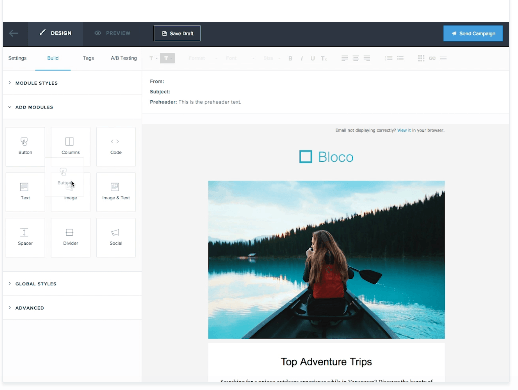
SendGrid is an email marketing service that covers all the marketing bases. This platform features marketing automation, email design, metrics, web API, SMTP service, and ads on social media and Google. SendGrid collects data on email opens, clicks, bounces, blocks, and drops. Marketers can also see where the emails are being opened and on what devices. All this information can be compiled into campaign reports. SendGrid feature A/B testing to send the most effective emails. Reviewers consistently praise SendGrid as a reliable enterprise-level email service provider. Users highlight the multiple uses SendGrid has, ranging from transactional emails, A/B tested email campaigns, automated onboarding, and bulk messaging.
“We use SendGrid to send marketing campaigns to enterprise customers, transactional emails to our app users, and for one-off email sends across multiple use cases. I’ve found the interface for building and sending marketing emails to be very intuitive and easy to navigate.”
Megan Kratzman | Director of Lifecycle Marketing | FullContact Inc.
The Wrap Up
Email marketing is essential to building brand engagement. But it must be done right. Overdoing email with spam-like content will only hurt your efforts.
It’s time to reconsider what tools can help you evolve your email campaigns to make them more streamlined and impactful. These were just a few options to get you started. There are plenty of other marketing tools to utilize – learn about them on our category page! You can also learn from your peers to see what email marketing tools are working for them.

